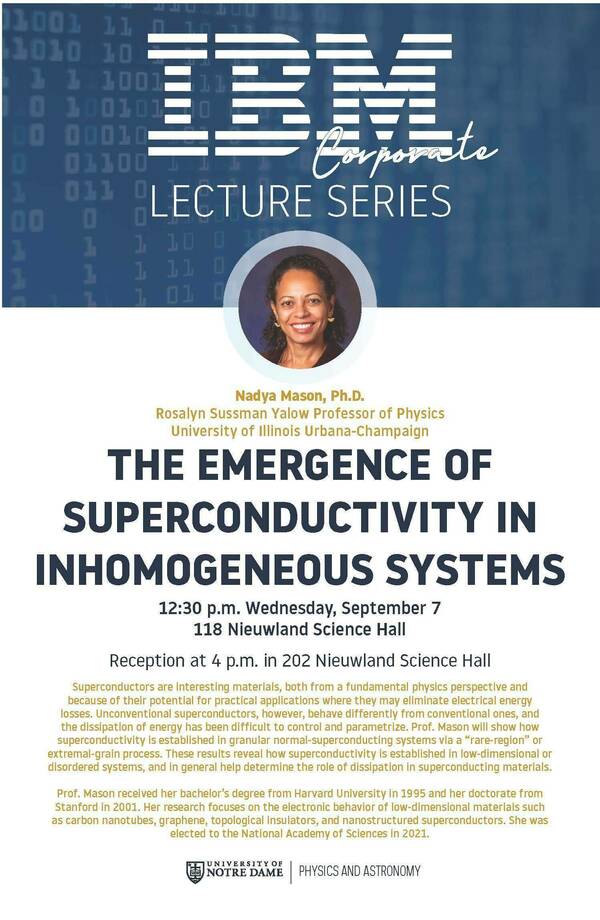
The Emergence of Superconductivity in Inhomogeneous Systems
Prof. Nadya Mason
Rosalyn Sussman Yalow Professor in Physics
UIUC
Superconductors are exciting materials for basic physics and applications because they conventionally exhibit zero-resistance and zero-dissipation (i.e., no energy loss). In contrast, unconventional superconductors—including high-temperature superconductors and hybrid superconductor-normal (S-N) systems relevant to quantum computation—combine superconductivity with dissipative normal metal-like states. Yet dissipation has been difficult to control and parametrize. In this talk, I will discuss electrical transport experiments on inhomogeneous superconductor-normal metal systems, and discuss the onset and ground states of superconductivity in these systems. In particular, I will show how superconductivity is established in granular normal-superconducting systems via a “rare-region” or extremal-grain process. These results are relevant to how superconductivity is established in low-dimensional or disordered systems, and in general help determine the role of dissipation in superconducting materials.
This is part of the IBM Corporate Lecture Series
Hosted by Prof. Eskildsen